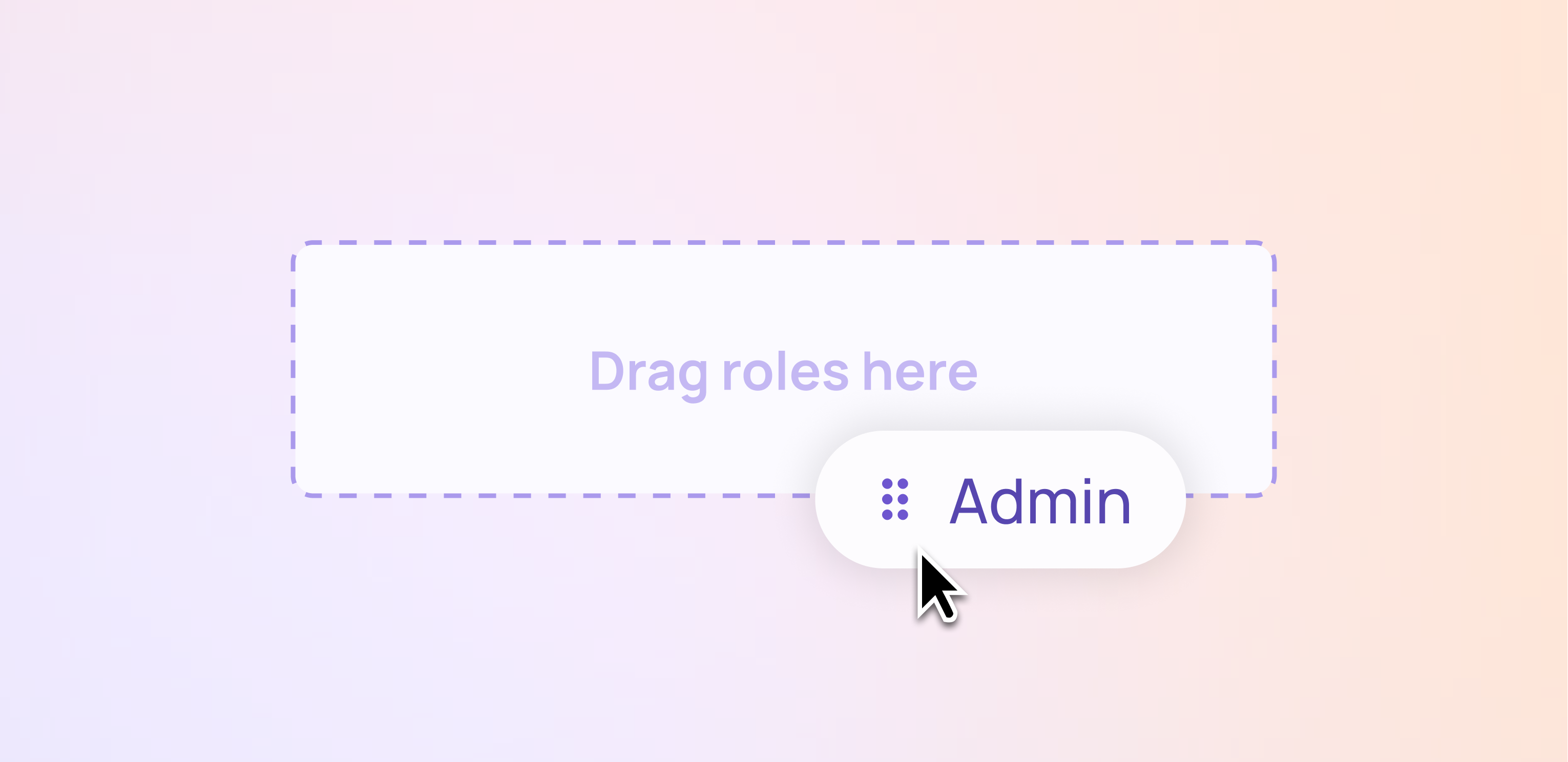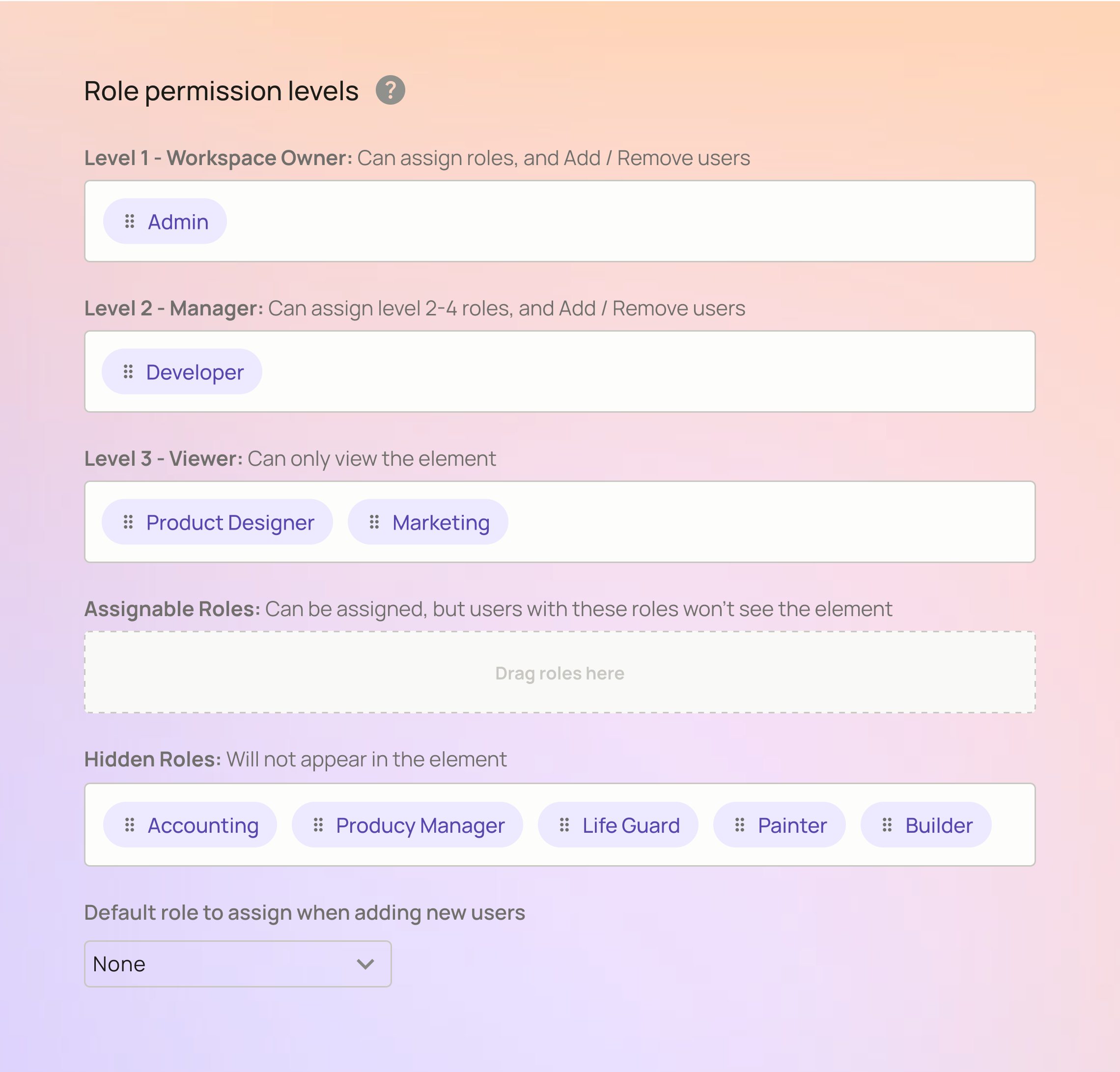Permissions Levels
What are Permission Levels?
Every Permit Embeddable UI Element provides a way to control access and assign roles to different permission levels.
In every Permit Element, as part of the configuration, permission levels play the most important part. Each levels provides it's own elevated or restricted access control, for that specific element, and all the same element types in an environment, depending on the role that has been dragged into the permission level.
As soon as a new element is created, all the permission levels will be empty, and the user will be able to see all his available roles, inside the Hidden Roles box. These are all the roles that the user can drag to the permission levels of his choice.

5 Permission Levels
| Workspace Permission Level | Description |
|---|---|
| Workspace Owner | The highest level of permission, the workspace owner has full access to the element and can assign and remove roles and thus the permissions to other users. |
| Manager | The Manager has access to all components and can assign/delete roles and permissions to other users, but they cannot make changes to the overall workspace. |
| Viewer | The viewer can only view the element and cannot make any changes. |
| Assignable Roles | The assignable roles are roles that can be assigned to users by the workspace owner or manager, however, the person with that role will not see the element. |
| Hidden Roles | The hidden roles are roles that will not appear in the element. |
As more elements come out, not every element will have the need to contain all the 5 permission levels. Some elements will be view only, which means you can only expect the Hidden Roles and the Viewer levels to be available for configuration.
